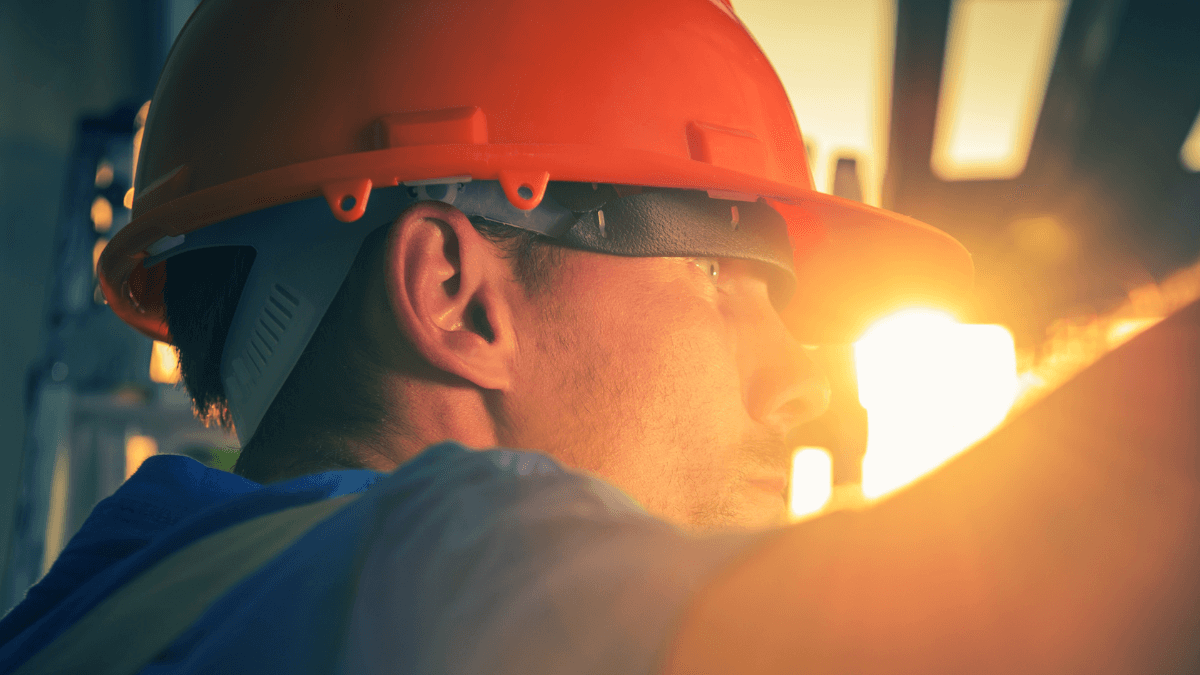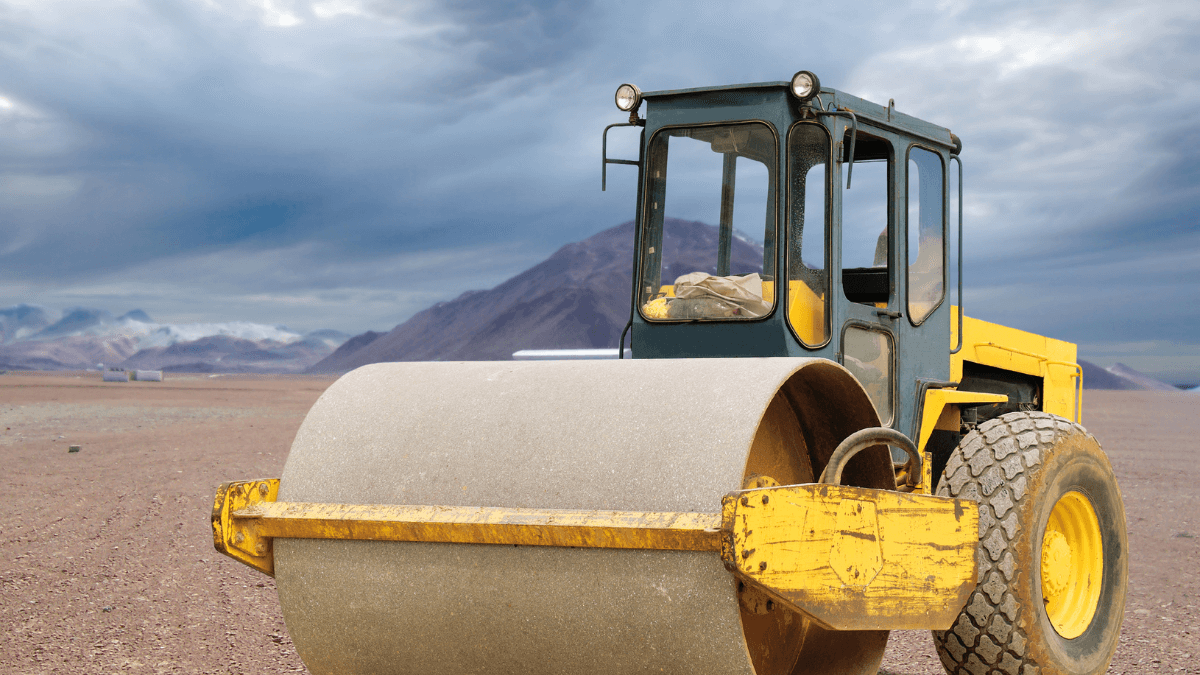The summer is fast approaching and promises to be a record-breaking one in terms of temperatures.
Cities across the US have already broken heat records this month, and the trend is to continue during the summer.
Back in May, half of the country experienced 90-degree heat, which is considered extreme.
Such temperatures can affect your construction workers in several ways. It’s up to you as the employer to protect the team and protect them from all the hazards this weather brings.
This article will list some of the most common summer construction site hazards and explain how to prepare for and deal with them.
In this article...
Dehydration
Dehydration happens when your body loses more water than it takes in, leaving you without the reserves necessary for normal bodily functions.
You’ll feel tired and thirsty and get muscle cramps and headaches. If left unaddressed, such a state can lead to more severe injuries or even death.
After all, your body doesn’t function normally without enough water.
The loss of water occurs through excess sweating without getting enough fluids. Working a heavy-duty job like construction in extreme heat is a recipe for dehydration.
The body loses a lot of water through sweating, and it’s not as easy to get all this water back into the body unless you remind yourself of it constantly.
Therefore, it’s not surprising that many construction workers lost their lives due to dehydration.
Three years ago, a construction worker spent a day working at a construction site while suffering from dehydration.
He went home and died in his trailer that day from the consequences of this experience.
Sadly, this case is not an exception.
Cari Elofson, Assistant Director of OSHA’s Training Institute Education Center, warns that more than 40% of heat-related worker deaths occur on construction job sites.
“Most heat-related illnesses and deaths are totally preventable.”

In other words, construction workers risk dehydration and heat-related problems during the summer. At the same time, you can take steps to prevent dehydration from happening.
Drinking the necessary fluids is the easiest way to fight dehydration. Experts think you should follow the 8×8 rule and drink eight eight-ounce glasses of water a day.
However, if your job is as physically demanding as construction, you should drink more since you’re also losing a lot more.
Your team should drink water to replenish their supplies even if they are not thirsty.
But, construction workers often skip this because water can get boring, according to John Meola, safety director at Pillar Engineers.
If you’re afraid of your workers doing the same, you can offer them drinks with electrolytes, like coconut water, or even some simpler alternatives.
“Even a slice of lemon will add some taste to a cooler,” Meola claims.
However, there are beverages you should avoid offering since they do more harm than good in extreme heat.
Avoid carbonated, sugary, and/or caffeinated drinks because they offer minimal hydration. Caffeinated drinks are diuretics, leading to water loss and dehydration.
You can prevent dehydration, one of the biggest heat-related hazards in the construction field, by ensuring your team gets enough fluids during the day.
Extreme Fatigue
Severe dehydration results in heat-caused fatigue, which means you sweat profusely, are constantly thirsty, and feel dizzy with a body temperature of 104°F and up.
Fatigue is more than just being tired—it’s a condition that impairs your ability to function, slowing you down drastically. Because of this, you’re more prone to accidents and injury.
Workers affected by this type of fatigue will experience symptoms of dehydration along with nausea, weakness, irritability, and heavy sweating, as explained in the safety video below.
Therefore, it will be obvious when someone on the team suffers from this fatigue.
However, you’re the one who should teach your workers to stop these symptoms and react on time before anything more serious happens.
At the same time, you should pay close attention to work schedules and ensure everyone has ample time to rest.
For example, the chart below explains how frequent and how long work the breaks should be depending on the temperature and the type of work (light, moderate, heavy).
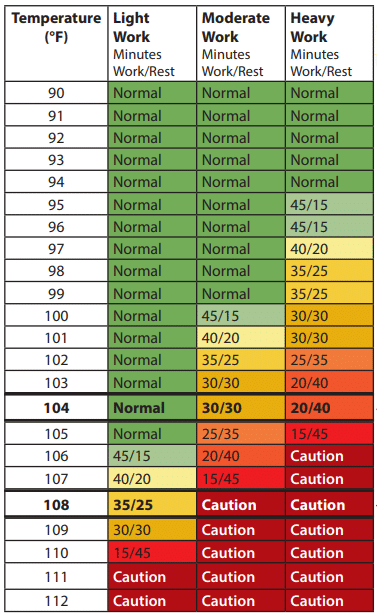
With heavy work, breaks should happen for 15 minutes every 45 minutes at temperatures of 95°F.
After the heat reaches 102 degrees, workers have to rest more than work, with suggested breaks being 35 minutes long.
When your team takes breaks, they should go to a cool place indoors.
If not possible, you should ensure there is some shade in the field, i.e., that your team doesn’t have to be in direct sunlight at all times.
As always in high temperatures, stack up on fluids and foods high in sodium, so your workers replace the sodium lost through sweat.
For another layer of protection, make everyone use necessary personal protective equipment (PPE), e.g., hats that protect heads from direct sunlight.
As the employer, you’re responsible for the workers and the PPE, so ensure you always have enough protective clothing and equipment.
Asset tracking software like GoCodes Asset Tracking will help you understand how many pieces of PPE you have available and when it’s time to reorder.
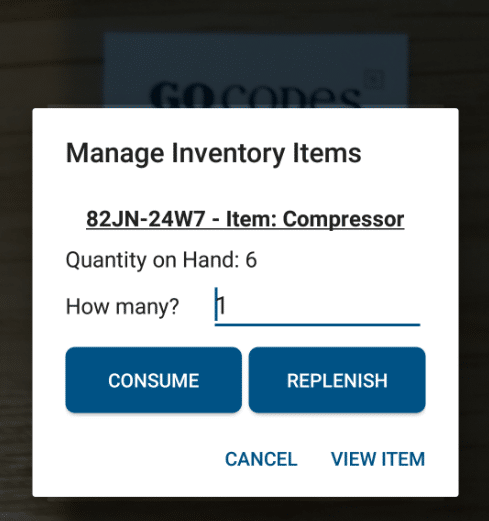
Using this feature, you’ll be sure you’re always protecting your workers from the sun.
If you don’t manage to prevent heat-related fatigue, you must train the workers to spot symptoms and act fast.
Training improves worksite safety and lets your team know exactly how they should behave in dangerous situations.
Teach your workers to cool down the tired worker, remove excess clothing, and give them fluids. It’s vital to cool the person down and keep them hydrated to help them recover.
If their condition stays the same or worsens, seek medical assistance immediately.
You can avoid heat-related fatigue by creating good work-break schedules and protecting your workers from direct sunlight.
Heat-Related Illnesses
The blanket term heat-related illnesses explains different conditions caused by extreme heat, such as cramps, heat strokes, and rashes.
OSHA warns that heat stroke is a medical emergency.
When a body experiences heat stroke, it’s unable to cool itself down, reaching temperatures up to 106 degrees, which can turn deadly.
Heat-related illnesses are so common that the US Department of Labor warned the public through a video.
The loss of water through sweating can also lead to heat cramps that cause muscles to hurt and contract.
Workers suffering from heat cramps should immediately stop working and sit down in a cool place, where they should remain until they feel better.
Such a worker can’t return to heavy-duty work for at least a couple of hours after cramping stops.
John Meola recommends postponing any non-emergency work when temperatures hit 90 degrees.
“Whenever possible, configure work in shaded areas, and use canopies or umbrellas to avoid direct sun exposure, even if only for intermittent protection.”
If your team has to perform certain activities in extreme heat, try to make their work as non-demanding as possible to avoid the body overheating.
When working on a demanding task, try to swap workers so none of them work on such a task for extended periods. Instead, they should take turns.
OSHA reminds not to let new construction workers perform their job at full intensity for more than 20% of their workday in the heat.
Increase the duration by 20% daily instead of asking someone to give their 100% on the first day and succumb to the heat.
On top of a working schedule, you can invest in training for your team, helping them recognize signs of heat-related problems, such as:
- Headache
- Nausea
- Weakness
- Heavy sweating
- High body temperature
When your construction team realizes another worker is experiencing these symptoms, they need to give the person water and move them to a chilly area.

OSHA advises removing unnecessary clothing and helping the person cool down. The affected worker shouldn’t be alone if experiencing these symptoms.
When your team isn’t sure whether someone needs medical care, the safest option is to call 911, to avoid risking anyone’s health and safety.
Proper preparation and training can help your workers either prevent heat-related illnesses or spot them before they escalate into serious injury or even death.
Sun Exposure
Due to the exposure to ultraviolet (UV) rays, spending time in the sun can have negative effects on the skin.
Direct exposure to the sun can lead to blisters and sunburns, which cause your skin to turn red, burn, and peel off.
Long-term exposure to the sun can increase the risk of developing skin cancer.
In fact, the most common type of cancer, non-melanoma skin cancer (NMSC), is caused by prolonged exposure to the sun. Sadly, construction workers are affected by this type of cancer.
Research by the Center for Disease Control and Prevention (CDC) has found that over 5,000 million people in the US get skin cancer every year and that many of the affected are construction workers.
The study also found that construction workers don’t pay much attention to sun-protective measures.
In fact, almost half of them admitted they don’t regularly use at least one type of protective clothing.

CDC confirms that you, as the employer, can change the statistic by making sun protection obligatory at the construction site.
Start by being aware of the UV index and teaching your managers and team to check it.
Even when the UV index is as low as 3, sun protection is obligatory because it takes people less than 40 minutes to get sunburnt.
The higher the UV index, the higher the sun protection factor (SPF) you should use, and the more necessary precautions you should take.
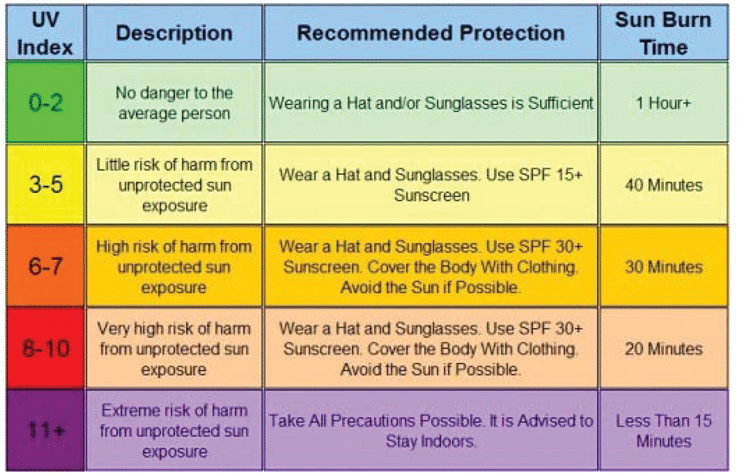
Of course, it also takes less time to get sunburnt. When the UV index is 11 or higher, it takes a person less than 15 minutes to get burnt.
Therefore, take this point seriously and ensure everyone has the required sun protection based on the UV index.
When working in the sun, workers need to protect their skin by wearing protective clothing. Skin must be covered so the sun cannot directly shine on it.
Long-sleeved shirts would work best, but in some cases, that’s simply not possible.
In such cases, the workers should apply sunscreen with SPF of at least 30 to prevent UV rays from damaging the skin.
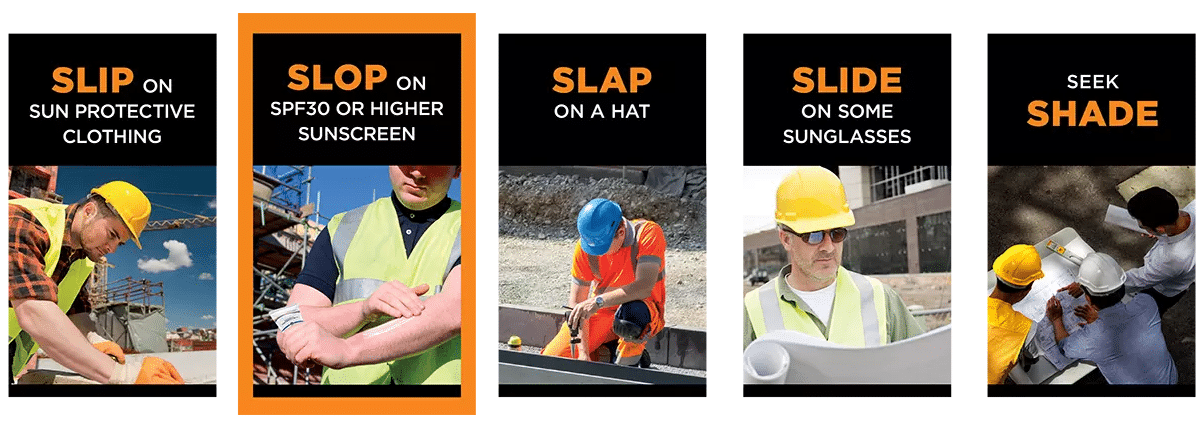
As the employer, give your construction workers protective equipment that covers the ears and the back of the neck since these areas are often neglected.
At the very least, give everyone a hat and make sure they’re wearing sunglasses. Your construction team should work in the shade to stay out of the sun when possible.
Frequent and prolonged sun exposure can damage the skin and lead to skin cancer, so you should implement sun-protective measures on your construction site.
Conclusion
Now that you understand the hazards that lurk during the summer, you can work on preparing for them and keeping your construction team safe.
All protection starts with good training and quality PPE. Train your team to understand the potential dangers, recognize the signs of different hazards, and react accordingly.
On top of that, teach them the importance of using sun-protective PPE.
Once you get that out of the way, you can work on setting up schedules with a lot of breaks, worksites with shade and available fluids, and monitoring temperatures and the UV index to be aware of the danger.

